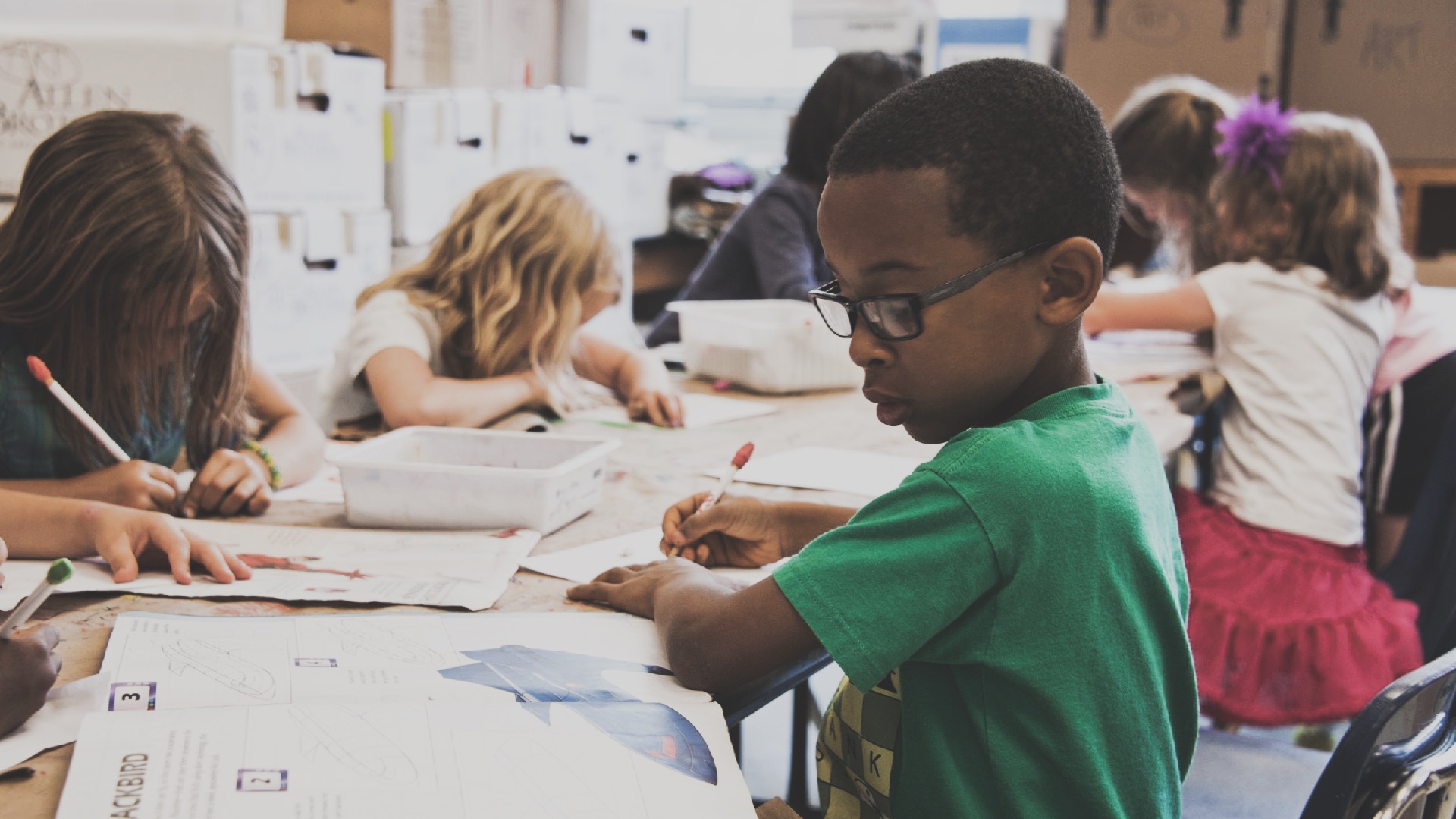There is a lot to talk about when we look at handwriting and when we look at how some professionals work with children to help with their handwriting we feel there are a lot of fundamentals that get overlooked, so we prepared this article/webinar to give you a good foundation.
• Part 1: We are going to look at what happens in the brain that helps you get to the point where you can hold a pencil and write letters clear legibly. It’s important to build skills in the right order. You have to learn to walk before you can run. Actually, did you know you had to learn to walk before you could talk? That one is for another webinar.
• Part 2: Why handwriting? Why it’s actually worth working on it and getting it right.
• Part 3: After working with thousands of people with this program as we have, we’ve come across some techniques that are better than others and we’ll give some general advice about what’s out there already in terms of teaching handwriting.
• Part 4: Throughout the presentation Claudie is going to give examples from the clients that we’ve worked with, but we also want to make sure that you end up with at least two or three sensory enrichment activities that you can do at home or in the school environment or in your practice that can help.
Watch the webinar for all the details, stories and advice, or continue reading for a summary
If Handwriting is a concern for someone in your family, we can help!
Part 1: Brain functions and developmental milestones of handwriting and of the pencil grip
We all have our own unique handwriting. It is a part of our personality and you cannot imitate someone else’s handwriting. That’s very important to know that it’s more than just mechanics, more than just learning to copy the same letter over and over again.
We know more about the brain now than we did, even just ten years ago. We know now that handwriting is as sophisticated as speech when it comes to neurological functions.
Brain functions needed
The combination that needs to strongly develop in order to produce handwriting includes some skills that you may not immediately think of. It is not just fine motor of the hands and vision. You also need to engage in your brain:
- Fine motor
- Sensory processing
visual, tactile, auditory, etc. - Gross motor
Your posture, for example, how you free the elbow and/or the shoulder will impact your writing - Mental image
You need to see in your mind what you want to write before you can write it. - Hand-eye coordination
Your mind and your eyes guide your hand. - Memory
you need to remember how you wrote that, how the teacher wrote it on the blackboard, how you saw it in a book. - Neurotransmitters
play an essential role in learning, anxiety, motivation, memory, motor control, etc.
Unfortunately, all or most of these are usually impaired in individuals with developmental delays, like autism.
When your student is really getting anxious during a practice the best solution is to stop and let the child regroup, settle down, because anxiety will prevent a good serotonin function. As a consequence learning cannot happen, nor can some of the other functions that require a healthy dopamine function.
Helping the brain regulate its neurotransmitters like Serotonin and dopamine is one of the improvements you can expect with Sensory Enrichment Therapy.
Developmental milestones of the pencil grip
There is an order, developmental milestones that you need in place before you can even hold a pencil. Let’s look at the order together:
- Grab
Grabbing to discover what’s around. Often accompanied by mouthing to explore with one of their most developed tools at the time: the mouth. - Reach
This milestone usually comes very quickly after grabbing. You have to see it, and then you have to want it, and then you have to know that this thing is yours and that you can use it. - Rake
Precursor to more refined pincer motions. More intention. More selection. More of a plan of what to pick up and what not to pick up. - Pick up with pincer
This milestone is usually develops along with more gross motor skills, such as sitting up. With balance of the upper body, the child can work on refining his picking up technique. - Sit up
To free up the hands and reach out further. - Manipulate with 2 hands
The child now has a pair of good friends to help him/her do very interesting things. Usually comes with crawling. - Point
Important stage not only because of the independence of the index finger, but also the social purpose of communicating. Pointing involves different emotions. It demonstrates an increased awareness of the self and of others. - Walk
You need your hands to walk, to keep you safe in case of fall, to hold on for stability, etc. As the child walks their world expands. There are a lot of new things to remember. - Hold a pencil
Don’t assume that because the child has reached a certain age and is attending school that they are ready to learn to hold a pencil.
Part 2: Why handwriting? What would we miss without it?
Some might argue that in this digital age, why should we focus on developing handwriting when we can use typing instead? If handwriting is removed from a child’s development process, it’s more than just losing a way to communicate.
Dexterity
Think of everything that involves your hands that you won’t do as much because you are less comfortable and less confident with your dexterity.
Think about surgeons. Do you want a surgeon with bad penmanship or a surgeon with good penmanship? How about a dentist?

Miss out on fulfilling jobs
if you are lacking in mental image and fine motor skills and if you are less comfortable working with your hands, you are missing out on many career opportunities that could be more satisfying, more fulfilling.
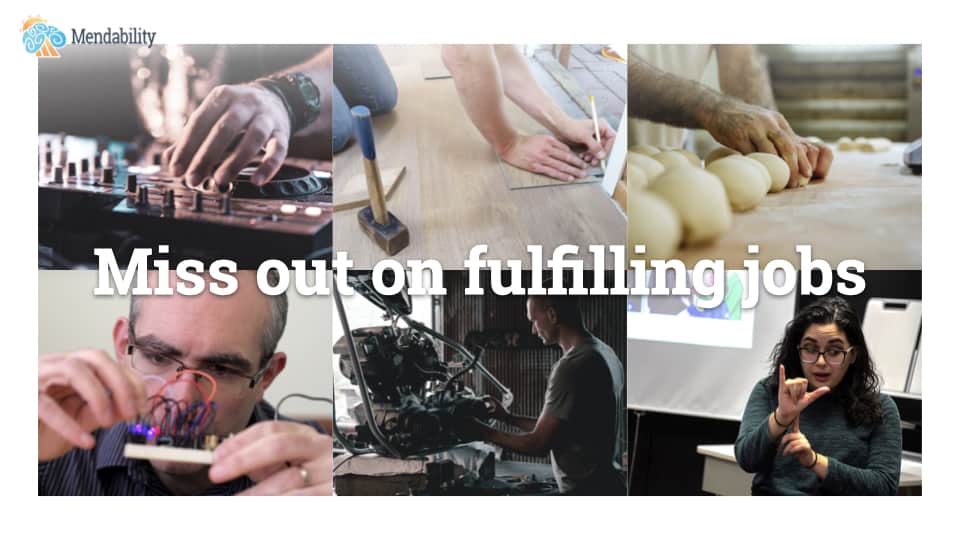
Less resilience
- Rely more on made-for-you
- Expect fast and easy delivery
- Plan less in your head
- Think less for yourself
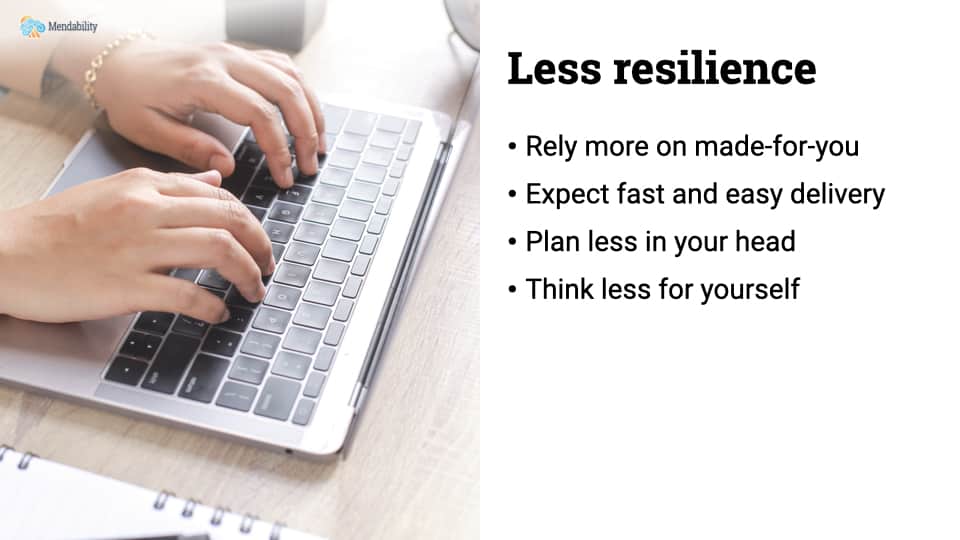
Overall, loss of fine motor, weaker mental image, and depending on other people or tools instead of working out these brain functions may impact your brain chemistry and lead to less emotional resilience, a weaker ability to manage change and stress, and possibly even an increase in depression and anxiety.
Typing is not the same as writing by hand. You don’t need to see the words in your mind before pressing on the keyboard.
Additional benefits of Handwriting
Nancy Olson wrote summarizes 3 benefits of handwriting in her article for Forbes:
“1. Handwriting increases neural activity in certain sections of the brain, similar to meditation. According to a study performed at the Indiana University, the mere action of writing by hand unleashes creativity not easily accessed in any other way. And high-tech magnetic resonance imaging has indeed shown that low-tech writing by hand increases neural activity in certain sections of the brain, much like meditation.
2. Handwriting sharpens the brain and helps us learn. Writing is good for keeping one’s gray matter sharp and may even influence how we think, as in “more positively,” studies show. Apparently sequential hand movements, like those used in handwriting, activate large regions of the brain responsible for thinking, language, healing and working memory.
3. Handwriting forces us to slow down and smell the ink. Another often-overlooked benefit of writing by hand is that it just plain forces us to slow down and enjoy the moment — a novelty in today’s world where immediacy reigns. Mindful writing rests the brain, potentially sparking creativity, according to neuroscientist Dr. Claudia Aguirre.”
Part 3: Do’s and don’ts of teaching handwriting
Stress is the enemy
Are you sure the child knows why you want them to hold the pen? Are you sure they have the words in their mind? Are they verbal enough?
If they are developmentally delayed in the area of language, motor skills or writing, take a step back and look for ways to help them improve in those areas and become more comfortable.
- Don’t spend too much time
- Don’t pressure them too much
- Don’t ruin writing for them
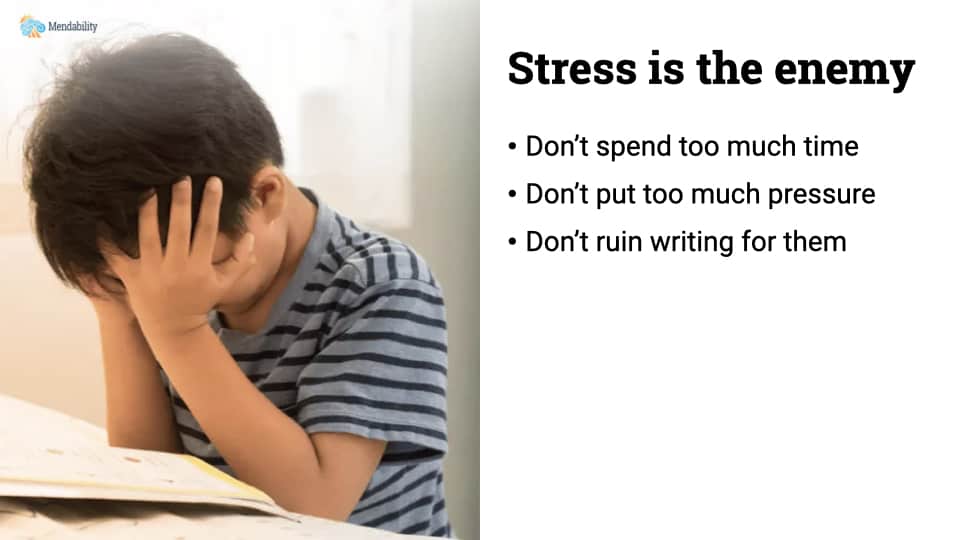
Rethinking “hand over hand”
Hand over hand is useful on day one, because the first day the child is not sure about what you are asking. Then you move out of the way. If they don’t learn to do it spontaneously, they are not learning at all. One of the brain’s modus operandi is to save as much energy as possible. If we give it a chance to perform a task by cutting corners, it will.

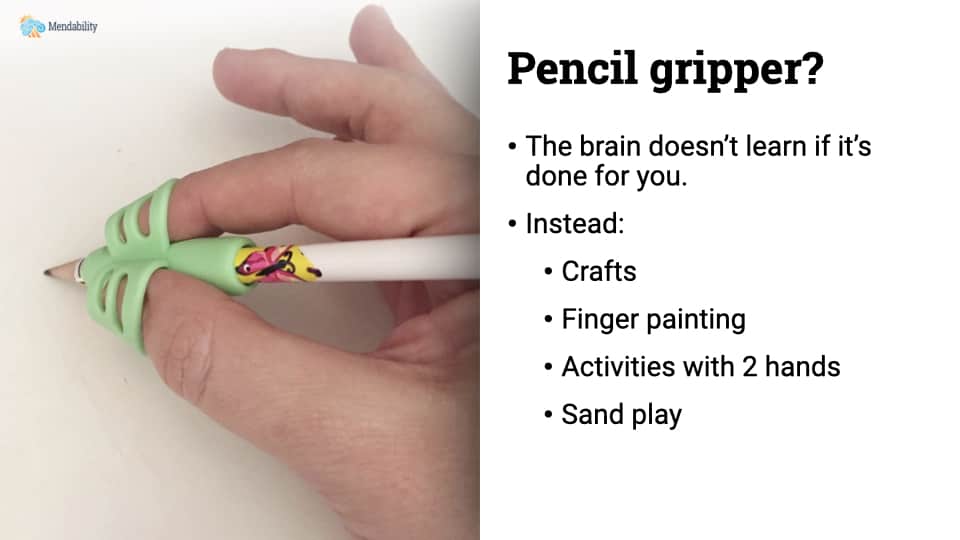
Language first?
If a child is nonverbal, don’t make the mistake of thinking that because a child cannot speak he does not understand what you are saying. Children love to be spoken to. Read to them. Not picture books for babies. Read books with real stories. You will be surprised by how much attention they give you and the story. Read with emotion, with tone. Make it a moment where they can feel the social connection of conversations.
See our webinars and articles about speech development here, and here.
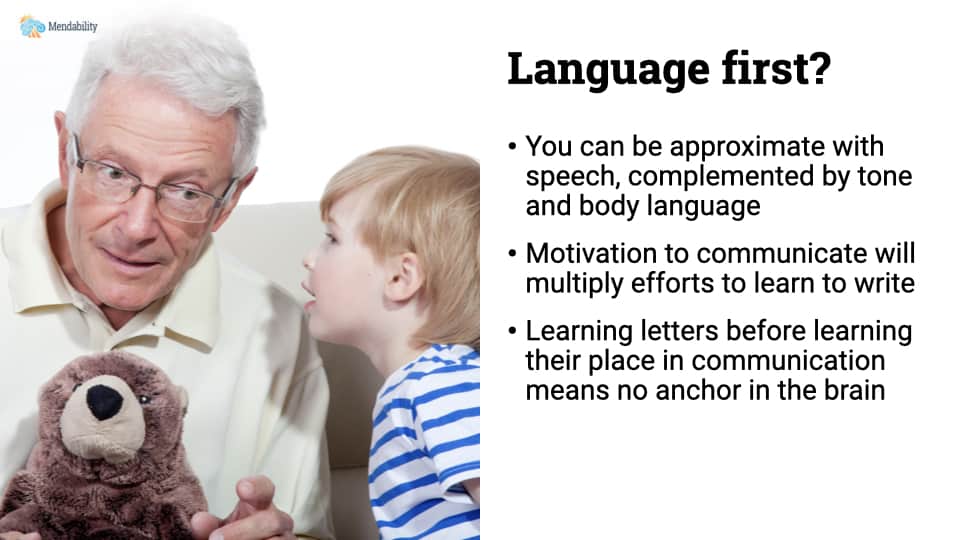
Draw first
Start with pure creation. Finger paint is a very good start, because you are going to teach fingers to work independently in a context where there is no mistake. Help them develop a desire to create. Praise and reward them by displaying and appreciating their art.
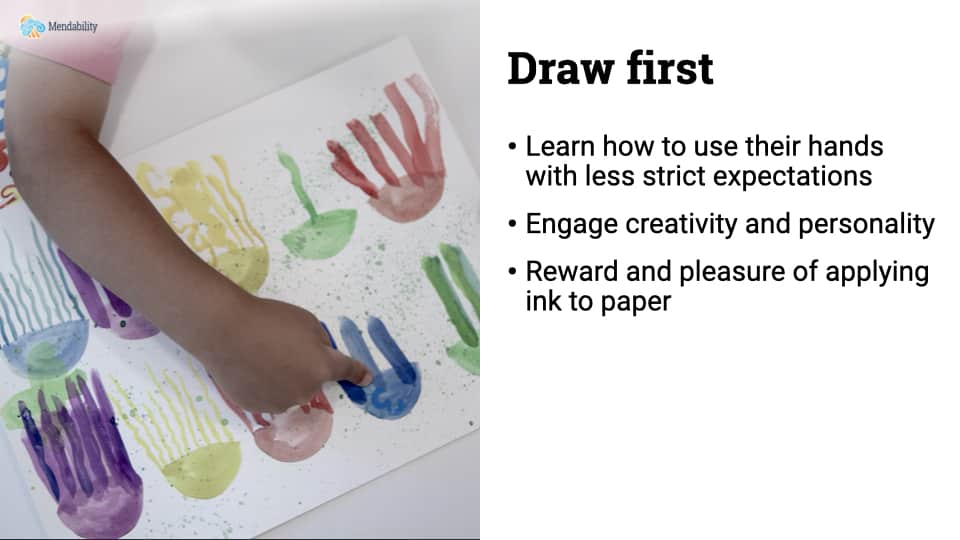
Part 4: Sensory Enrichment Activities that can help improve handwriting
Activity 1: Touch and Smell
Soft touch helps the brain regulate its Serotonin function (involved in learning, managing stress, motor skills, sleep, sensory processing, etc.). This can be done with a hand massage anywhere, anytime. You can also do it with a back rub. (See here for additional advice for children with tactile defensiveness here and here)
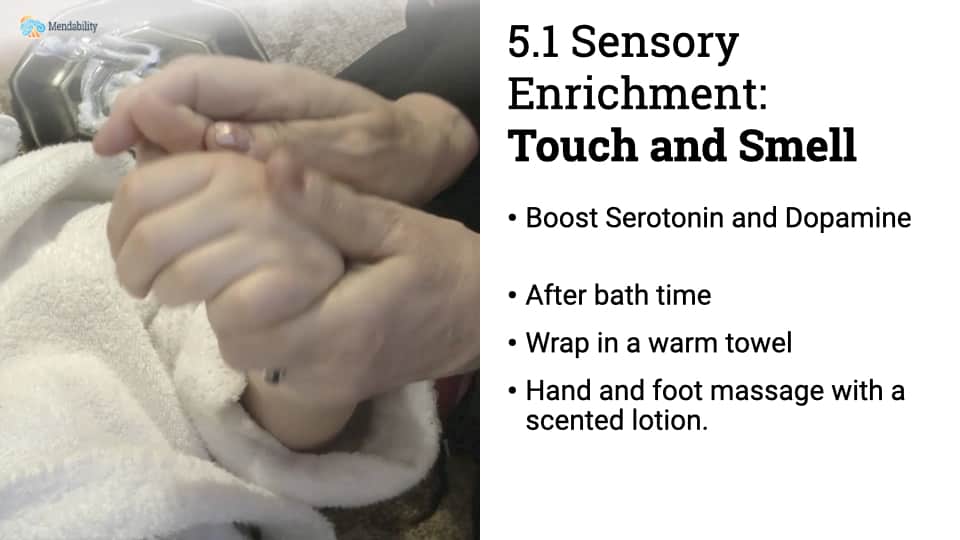
Add smelling to the tactile experience to add the benefits on the brain of helping it regulate its dopamine function (involved in memory, mood, motivation, motor skills, sleep, etc.).
When you combine a pleasant olfactory experience with a pleasant tactile experience, you also trigger a third event, which is an elevated of neuroplasticity, which will help with attention and learning.
This is a great protocol to do before a therapy session or before a lesson.
Activity 2: Piggy bank in the mirror
The person is to pick up and slot coins into a piggy bank with both simultaneously without being to look at their hands directly. They can only see their hands in a mirror.
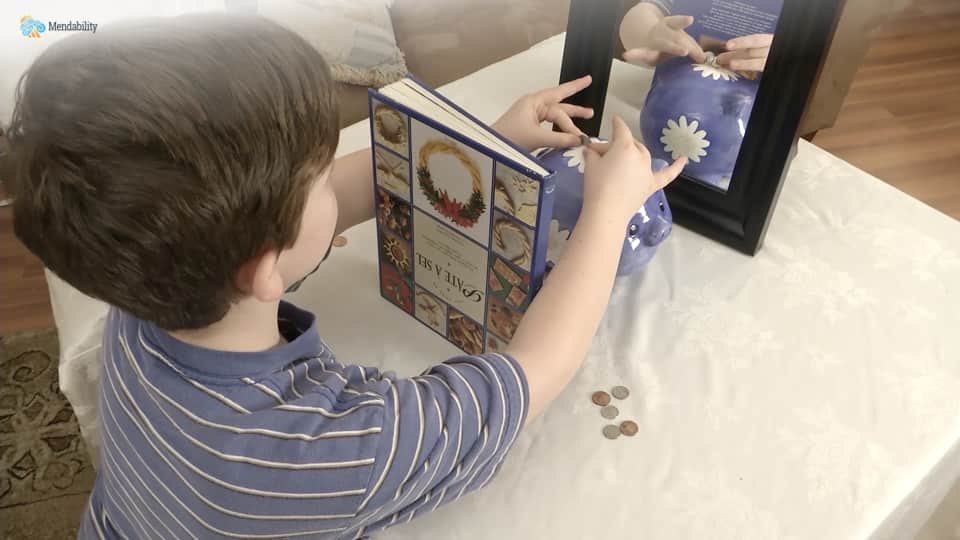
This exercise is meant to be difficult. They are not expected to be able to complete it successfully. All we need for the purposes of the activity to be fulfilled is for them to try. It’s okay for them to cheat at first. It’s while it is trying something new that the brain grows, so long as the challenge is interesting, so make sure they have fun trying.
This is a great exercise to:
- enhance communication between the two sides of the brain,
- teach the brain where the fingers are,
- this is how they feel when we do something with them, and
- this is what they can do.
Activity 3: Plant toothpicks in play dough
The person is to bend their fingers one by one and poke holes in the play dough with this strange finger position, one finger at a time, until all fingers on both hands have been used. Then pick up toothpicks and plant them vertically into the holes.
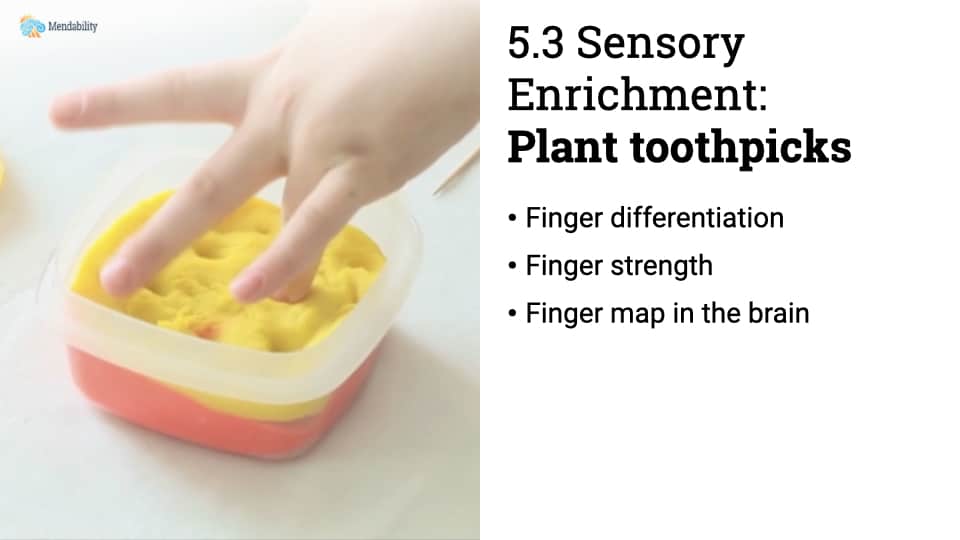
This exercises is also difficult. Even typically developing kids would struggle with this, so encourage yours gently and respectfully.
This is a great exercise to:
- teach the brain how to give more sophisticated commands to the hands and fingers
- help fingers develop strength and coordination
Activity 4: Find the marble in ice and corn
The person is to look for 2 marbles. One was placed among ice cubes. The other was placed among grains of dry corn.
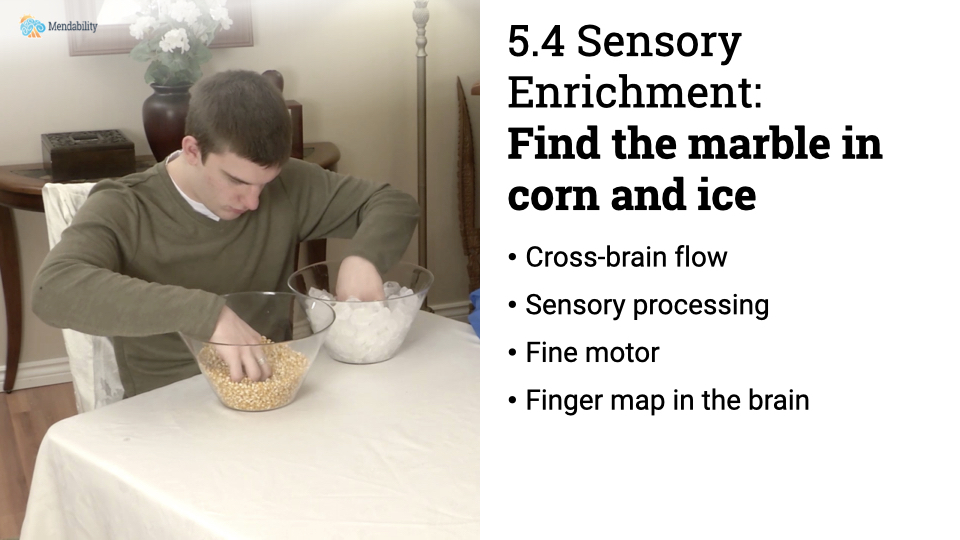
This is a great exercise to:
- stimulate new sensory pathways from the fingers to the brain
- enhance the map of the hand in the brain
- enhance communication between the two sides of the brain
Q&A
- Q: What about letter reversal as seen in dyslexia? For example, the letters “b” and “d”?
A: Give identity to the letters. Give the letters meaning. This will help them memorize the letters shape by anchoring the abstract concept to a tangible thing in their brain. You can also anchor these abstract shapes in their brain by associating other sensory experiences with the letters. Make the letters out of play dough. Line up food items like peas or corn. Give the letters a face or a hat. For example, Capital B could be a big snowman, etc. - Q: One of the questions I still have is why do I have some students that have very creative and amazing art work, yet their writing is hard to read?
A: Drawing is a very different function from handwriting. You write following rules: spelling, memorization, content (often imposed at school), size, auditory processing. Art is the product of creativity, the opposite of rule abiding. You draw or paint a feeling. Interviewed artists explain that they do not paint things or people, they paint light, emotions. They tell an inner story.
Watch this video where I tell the stories of children who were exposed to art from a young age, here and here.
About our presenter: Claudie Pomares

Claudie Pomares has worked in hospitals, daycares, and educational settings in France, Canada, and the USA for over 30 years. Her university studies lead her to develop an expertise in sensory stimulation and its impact on brain development.
Read more about her here.
Mendability is a telehealth program focused on the well-being of the brain.
We use sensory enrichment to stimulate the human brain and enable it to treat itself. This happens when the brain creates better connections to replace the ones it didn’t develop or has lost.
Our program consists of daily exercises that you can do from home and it doesn’t take more than a few minutes. To learns more check out the how the program works page and what it helps with.

